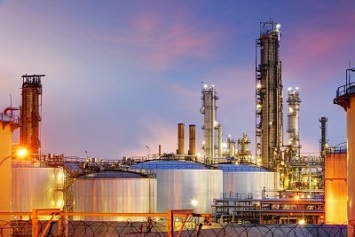Explosions at two petroleum refineries in 2015 and 2018 resulted in a high level of alarm in the neighboring communities about the possibility of releases of clouds of hydrofluoric acid (HF) or modified HF (MHF) into those communities. The U.S. Chemical Safety and Hazard Investigation Board (CSB) investigated both incidents and also held public meetings to report its findings and listen to community concerns.

The CSB subsequently wrote an April 2019 letter to the EPA recommending that the Agency review its 1993 report to Congress on the potential hazards HF and MHF pose to public health and the environment and also determine whether there are safer alternatives to HF and MHF in petroleum refining.
Toxic by Contact and Inhalation
HF and MHF have many industrial applications. Sixty percent of HF and MHF is used to make refrigerants. In petroleum refining they serve as catalysts in a process called alkylation. The process adds high octane hydrocarbons to motor and aviation gasoline. High octane hydrocarbons are needed to help prevent autoignition of gasoline (knocking) in an engine and to meet recommended engine octane ratings. HF is used in about 50 of the nation’s approximately 150 refineries.
HF and MHF are toxic by every route of exposure. They go easily and quickly through the skin and into the tissues in the body, damaging the cells and making them nonfunctional. Skin contact may also cause severe burns that develop after several hours and form skin ulcers. Inhalation can damage lung tissue and cause swelling and fluid accumulation in the lungs (pulmonary edema).
In its letter to the EPA, the CSB notes that both explosions occurred near tanks that contained HF or MHF, although no release of the chemicals occurred. However, in one of the incidents, explosion debris punctured an asphalt storage tank located farther away from the point of the explosion than the refinery’s HF storage tank. In the public hearings, some residents urged the state to ban HF, and most speakers wanted to know if there are safer alternatives to HF at refineries.
Unique Precautions Not Required
In its 1993 study, the EPA acknowledged the high risks attached to HF and MHF. However, the Agency appeared to believe that the risk was being adequately managed.
“The properties that make HF a potentially serious hazard are found individually or in combination in many other industrial chemicals; thus, HF does not require unique precautions,” stated the Agency. “Instead, within each of the several different circumstances in which HF is handled, an appropriate combination of general and special precautions should result in: (1) the safe management of HF and other hazardous substances with an emphasis on accident prevention; (2) the preparedness to properly and quickly respond to chemical emergencies and to provide specialized medical treatment if necessary; and (3) community understanding of the risks involved.”
The EPA added that it believed the legislative authorities already in place provided a solid framework for the prevention of accidental chemical releases and preparedness in the event that they occur, and no legislative action from Congress was recommended.
Inherently Safer Technology
But the CSB “strongly encourages” the EPA to initiate a review and update the 1993 study to determine whether the existing HF and MHF risk management plans at refineries are sufficient to prevent catastrophic releases. The CSB also notes that new alkylation technologies are being developed, which may have inherent safety advantages over the use of HF at U.S. refineries. These include a solid-state technology and an ionic liquid technology, both of which are currently being planned to replace existing HF alkylation units in at least two refineries.
The CSB says it believes it is fully within the EPA’s authority and responsibility under to the Clean Air Act’s Risk Management Program to implement these recommendations where appropriate.
